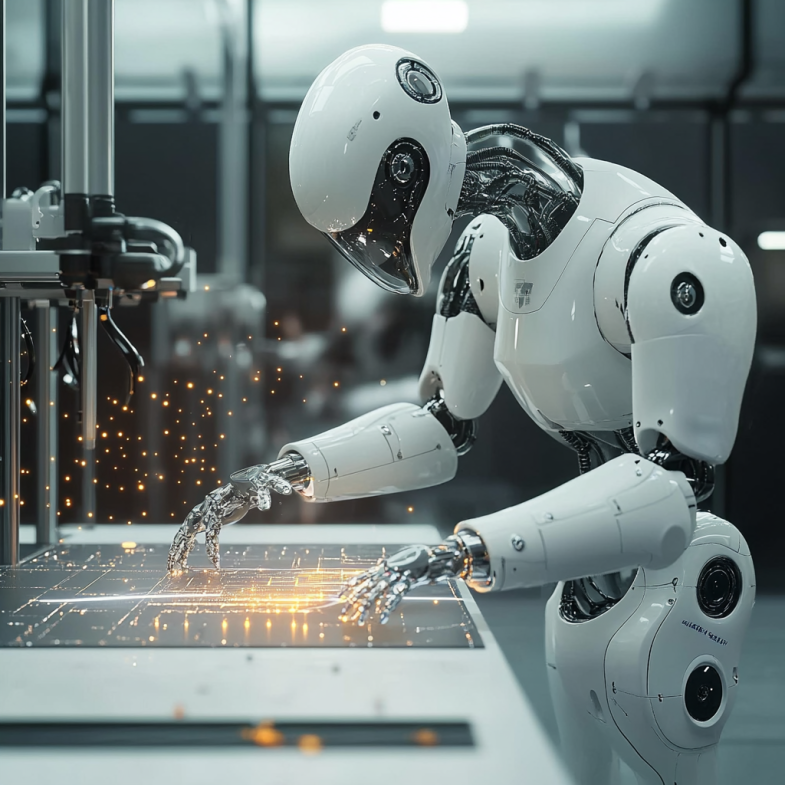With the development of technology, robots are becoming an increasingly important part of our lives. They are used to perform various tasks – from automating production to performing complex surgeries. Robotics not only increases the efficiency and accuracy of work, but also opens up new horizons for innovation and improving the quality of life. In this article, we will look at examples of the use of robots in various fields, including their application in the medical and manufacturing sectors.
Chapter 1: What is Robotics?
Definition of Robotics
Robotics is the process of implementing robots and automated systems to perform various tasks. These systems can be programmed to perform repetitive or dangerous operations, which helps to increase productivity and safety at work. Robots can be used in a variety of fields, ranging from industrial production to healthcare and education.
Advantages of Robotics
One of the main advantages of robotics is the increase in efficiency and accuracy of work. Robots can work around the clock without fatigue and errors, which significantly increases productivity. In addition, the use of robots reduces the risk of injury to people, especially in hazardous environments such as chemical plants or mines.
Another important benefit is the ability to automate routine and labor-intensive tasks. This frees up employees to perform more creative and strategic tasks, which contributes to professional growth and increased job satisfaction.
Chapter 2: Examples of Robot Use in Manufacturing Assembly Line Automation
One of the most common examples of robot use in manufacturing is the automation of assembly lines. Robots can perform tasks such as welding, painting, assembling parts, and packaging products. This can significantly reduce production time and improve product quality. For example, in automobile factories, robots can assemble cars with micron accuracy, which ensures high quality finished products.
Logistics and Warehousing
Robots are also actively used in logistics and warehousing. Automated warehouse management systems (AS/RS) allow goods to be moved quickly and accurately around warehouses, minimizing the risk of errors and damage. In addition, robotic handlers can carry heavy loads and operate in tight spaces, making them ideal for large distribution centers.
Quality Control
Another important application of robots in manufacturing is quality control. Robots can use cameras and sensors to inspect products for defects and non-conformance to standards. This allows for early detection of defects, which reduces the cost of correcting errors and improves the overall quality of the manufactured product.
Chapter 3: Examples of Robotic Use in Medicine Surgical Robots
One of the most impressive examples of robotic use in medicine is surgical robots. Systems such as the Da Vinci allow surgeons to perform complex surgeries with extreme precision and minimal intervention. Robots provide 3D vision and arm stability, allowing surgeries to be performed through small incisions, significantly reducing patient recovery time and reducing the risk of complications.
Robotic Assistance
Robotic assistance also plays an important role in medical practice. For example, robots can assist medical staff in hospitals by delivering medications and equipment, as well as providing information to patients and their families. Some robot models can even interact with patients, performing basic diagnostic procedures and collecting data for further analysis by doctors.
Rehabilitation robots
Rehabilitation robots help patients recover from injuries and surgeries. These devices can imitate limb movements, helping patients regain strength and mobility. For example, robots can be used for stroke rehabilitation, helping patients learn to walk and move their arms again. This significantly speeds up the recovery process and improves the quality of life of patients.
Chapter 4: Benefits and Challenges of Robotics
Benefits
One of the main benefits of robotics is increased productivity and accuracy. Robots can work faster and more accurately than people, which allows for a significant increase in production volume and improved product quality. In addition, the use of robots reduces the risk of injury to people, especially in hazardous conditions.
Another important benefit is the ability to automate routine and labor-intensive tasks. This frees up employees to perform more creative and strategic tasks, which leads to professional growth and increased job satisfaction.
Challenges
Despite the many advantages, robotics also has its challenges. One of the main problems is the need for significant investment in the development and implementation of robotic systems. This can be especially difficult for small and medium-sized enterprises that do not have sufficient financial resources.
Another important problem is the need to train personnel to work with robots. Workers must have the knowledge and skills to effectively manage robots and solve problems that arise. This requires additional training and adaptation of existing educational programs.
Robotics has great potential to improve productivity and quality of work in many industries, including manufacturing and medicine. It allows you to automate routine and dangerous tasks, which frees up employees to perform more creative and strategically important tasks. However, for the full implementation of robotic systems, it is necessary to solve a number of technical and social problems, such as data protection and ensuring equal access to new technologies.


